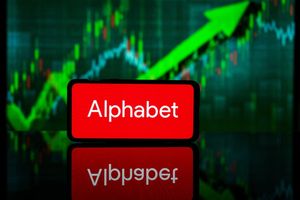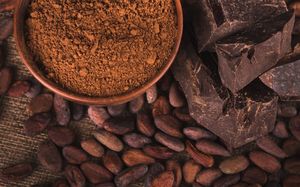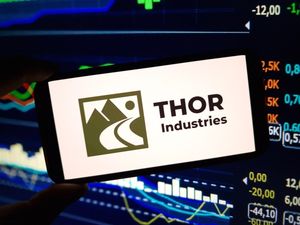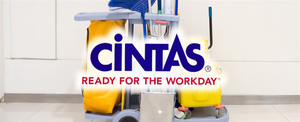The "Europe Activated Carbon Market for Water Treatment: Focus on Application, Product, and Country Analysis - Analysis and Forecast, 2025-2035" report has been added to ResearchAndMarkets.com's offering.
The Europe activated carbon market for water treatment is projected to reach $825.0 million by 2035 from $371.4 million in 2024, growing at a CAGR of 7.45% during the forecast period 2025-2035.
The market for activated carbon in water treatment in Europe is essential to guaranteeing clean, safe water for use in industrial, municipal, and environmental settings. Because of its remarkable adsorption ability, activated carbon is used to rid drinking and process water of impurities like microorganisms, PFAS, medications, pesticides, and chlorine byproducts. Both virgin carbon, which is made from coal, coconut shell, or wood, and reactivated carbon, which restores spent media for repeated use, provide a sustainable and economical alternative for the supply of carbon in Europe.
The regional value chain consists of raw material processing, activation, shape or milling, application engineering, and closed-loop regeneration. Because of their sophisticated water treatment systems, strict environmental laws, and robust industrial demand, Germany, the UK, France, and Italy are important markets. Technological developments concentrate on improving rotary-kiln reactivation efficiency, customizing pore architectures for particular pollutants, and incorporating digital monitoring to maximize performance.
The transition to bio-based feedstocks and low-energy activation techniques is being accelerated by EU regulations, especially the Drinking Water Directive, and sustainability objectives. The market for activated carbon water treatment in Europe is expected to increase steadily due to rising water shortages, industrial discharge limits, and public health awareness, all while striking a balance between innovation, environmental responsibility, and regulatory compliance.
How can this report add value to an organization?
Product/Innovation Strategy: The study dissects demand by carbon type (GAC, PAC, others), by application (liquid-phase adsorption, gas-phase adsorption), and end-use industry (municipal water treatment, food and beverages, pharmaceutical and medical, mining and metal recovery, chemical industry, textile industry, and others). It outlines advances in pore-engineering that enhance PFAS uptake and highlights trends in renewable feedstocks, providing R&D teams with insights to align new grades with high-growth market segments.
Growth/Marketing Strategy: Market-share tables identify key incumbents and the service gaps they leave, guiding go-to-market plans for emerging suppliers or technology partners.
Competitive Strategy: Profiles of key players map capacities, reactivation footprints, and recent acquisitions so corporate strategists can benchmark M&A or partnership targets. Pricing-forecast and patent-filing analyses inform negotiation baselines and IP positioning.
Market Trends, Drives and Challenges of Europe Activated Carbon Market for Water Treatment
Market Trends
- Growing demand for advanced water purification due to aging municipal water infrastructure in Europe.
- Shift toward environmentally friendly and sustainable activated carbon production methods, including reactivation and bio-based sources.
- Increasing application of powdered activated carbon (PAC) in municipal water treatment plants for micro-pollutant removal.
- Integration of hybrid treatment systems combining activated carbon with membrane filtration or UV disinfection.
- Adoption of stringent EU water quality regulations (e.g., Drinking Water Directive updates) driving continuous technological upgrades.
Key Market Drivers
- Declining freshwater availability and rising water stress levels in Southern and Eastern Europe.
- Stringent environmental regulations on industrial effluent discharge and municipal water treatment.
- Rapid urban population growth increasing the demand for safe drinking water.
- Rising industrial water treatment needs in sectors like food & beverage, pharmaceuticals, and chemicals.
- Increased public awareness on waterborne diseases and microplastics contamination
Major Market Challenges
- High production and reactivation costs for activated carbon compared to some chemical alternatives.
- Availability of low-cost substitutes (e.g., advanced oxidation processes, ion exchange resins) in certain applications.
- Complexity of EU regulatory compliance for imports and product specifications.
- Volatility in raw material supply (e.g., coconut shell, coal, wood) leading to cost fluctuations.
- Difficulty in handling and disposal of spent activated carbon with adsorbed hazardous compounds.
Companies Featured
- Jacobi Carbons AB
- Silcarbon Aktivkohle GmbH
- Norit
- CarboTech AC GmbH
- Donau Carbon GmbH
- Desotec NV
Key Attributes:
| Report Attribute | Details |
| No. of Pages | 90 |
| Forecast Period | 2025 - 2035 |
| Estimated Market Value (USD) in 2025 | $402.2 Million |
| Forecasted Market Value (USD) by 2035 | $825 Million |
| Compound Annual Growth Rate | 7.4% |
| Regions Covered | Europe
|
Key Topics Covered:
Executive Summary
Scope and Definition
1 Market: Industry Outlook
1.1 Trends: Current and Future Impact Assessment
1.1.1 Sustainability and Circular Use of Activated Carbon
1.1.2 Increasing Public Awareness and Adoption of Filtration
1.2 Supply Chain Overview
1.2.1 Value Chain Analysis
1.2.1.1 Virgin Activated Carbon
1.2.1.2 Reactivated Carbon
1.2.2 Market Map
1.2.3 Pricing Forecast
1.3 Research and Development Review
1.3.1 Patent Filing Trend (by Number of Patents, by Country, and Company)
1.4 Regulatory Landscape
1.5 Stakeholder Analysis
1.5.1 Use Case
1.5.2 End User and Buying Criteria
1.6 Market Dynamics
1.6.1 Market Drivers
1.6.1.1 Stricter Water Quality Regulations
1.6.1.2 Growing Water Pollution and Demand for Clean Water
1.6.2 Market Challenges
1.6.2.1 Raw Material Supply Constraints and Cost Volatility
1.6.2.2 Spent Carbon Disposal and Environmental Concerns
1.6.3 Market Opportunities
1.6.3.1 Emerging Contaminant Remediation
1.6.3.2 Investment in Water Infrastructure and Reuse Projects
2 Region
2.1 Regional Summary
2.2 Europe
2.2.1 Regional Overview
2.2.2 Driving Factors for Market Growth
2.2.3 Factors Challenging the Market
2.2.4 Application
2.2.5 Product
2.2.6 Europe (by Country)
2.2.6.1 Germany
2.2.6.1.1 Application
2.2.6.1.2 Product
2.2.6.2 France
2.2.6.2.1 Application
2.2.6.2.2 Product
2.2.6.3 U.K.
2.2.6.3.1 Application
2.2.6.3.2 Product
2.2.6.4 Italy
2.2.6.4.1 Application
2.2.6.4.2 Product
2.2.6.5 Spain
2.2.6.5.1 Application
2.2.6.5.2 Product
2.2.6.6 Poland
2.2.6.6.1 Application
2.2.6.6.2 Product
2.2.6.7 Rest-of-Europe
2.2.6.7.1 Application
2.2.6.7.2 Product
3 Markets - Competitive Benchmarking & Company Profiles
3.1 Overview
3.2 Top Products/Product Portfolio
3.3 Top Competitors
3.4 Target Customers
3.5 Key Personal
3.6 Analyst View
3.7 Market Share, 2024
4 Research Methodology
For more information about this report visit https://www.researchandmarkets.com/r/6pivbt
About ResearchAndMarkets.com
ResearchAndMarkets.com is the world's leading source for international market research reports and market data. We provide you with the latest data on international and regional markets, key industries, the top companies, new products and the latest trends.
View source version on businesswire.com: https://www.businesswire.com/news/home/20250924637246/en/
Contacts
ResearchAndMarkets.com
Laura Wood, Senior Press Manager
press@researchandmarkets.com
For E.S.T Office Hours Call 1-917-300-0470
For U.S./ CAN Toll Free Call 1-800-526-8630
For GMT Office Hours Call +353-1-416-8900





